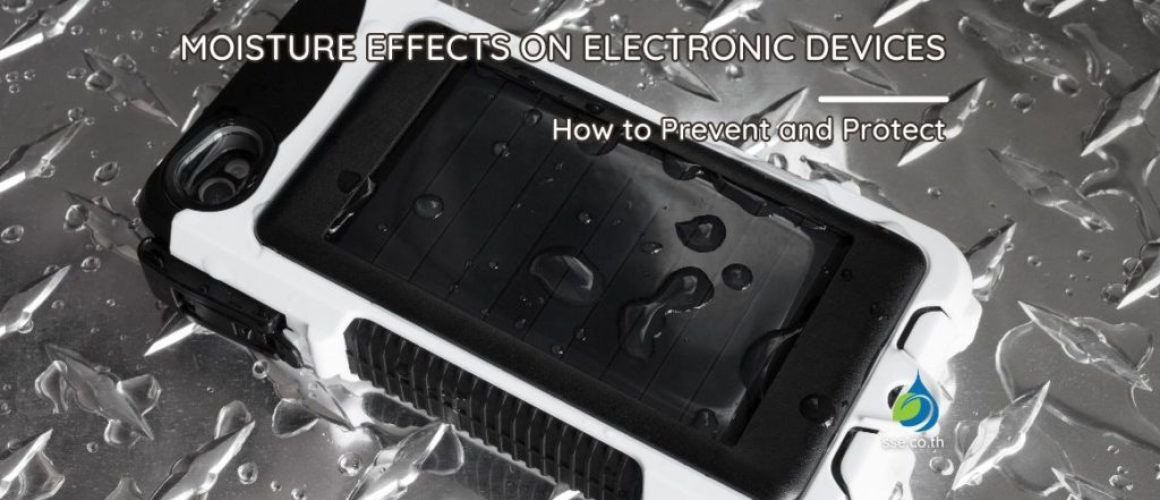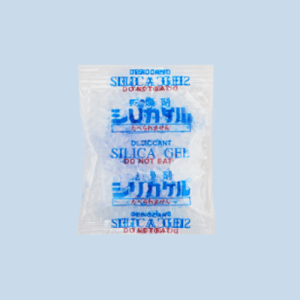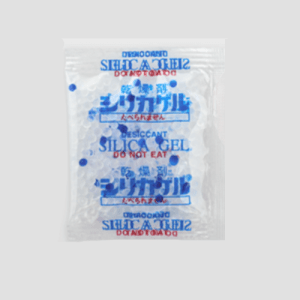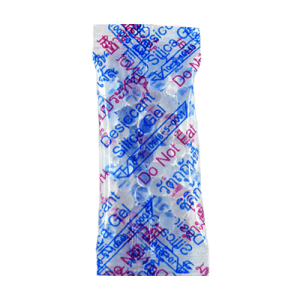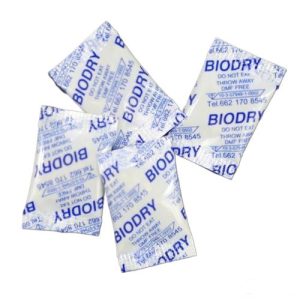Moisture Effects on Electronic Devices: How to Prevent and Protect


Table of Content
Understanding Moisture Effects on Electronic Devices
When we talk about the “Moisture Effects on Electronic Devices”, we’re referring to the potential damage that can occur when electronic devices come into contact with water or are exposed to high humidity environments.
This can lead to a variety of issues, including short-circuiting, corrosion of components, and overall degradation of device performance. Understanding these effects is the first step towards preventing them and protecting your devices.
Protecting Electronics from Humidity
Humidity can be a silent killer for electronic devices. High levels of moisture in the air can seep into the device, leading to condensation and ultimately, water damage. It’s crucial to understand how to protect your electronics from humidity, especially if you live in a humid climate or are traveling to one.
One effective way to combat humidity is by using desiccants.
Desiccants are substances that absorb moisture, keeping your devices dry and functioning properly. They come in various forms, such as silica gel packets, or natural clay packets, and can be placed inside the packaging or storage boxes of your electronics.
Water Damage in Electronic Devices
Water damage is a frequent problem that plagues electronic devices, often leading to hefty repair costs or, in the worst cases, complete device failure. But what does water damage really mean? In simple terms, it’s when any component of an electronic device comes into contact with water or any other liquid, causing it to malfunction or stop working altogether. One way to prevent liquid damage is to use protective cases that are water-resistant. These cases provide a physical barrier that prevents liquids from seeping into your device.
The impact of water damage on device performance can be significant. For instance, you might notice that your device is running slower than usual, or certain features aren’t working as they should. In some cases, the device might not turn on at all. These are all signs that water may have infiltrated your device and caused some internal damage.


But how does water cause such havoc? Well, most electronic devices are made up of intricate circuits and delicate components. When water seeps in, it can cause these circuits to short out, disrupting the flow of electricity. This can lead to a range of issues, from minor glitches to total system failure.
Identifying water damage can sometimes be straightforward. For example, if your device was submerged in water or a drink was spilled on it, it’s safe to assume water damage is the culprit. However, sometimes the signs are less obvious. You might notice that your device is overheating, or the battery is draining faster than usual. These could also be signs of water damage.
Impact of Moisture on Device Performance
Moisture, whether it’s from a spilled drink, a humid day, or even just a bit of sweat, can have a significant impact on the performance of electronic devices. This might seem a bit surprising at first, but when you consider the intricate circuitry and delicate components that make up our devices, it starts to make sense.
One of the most immediate impacts of moisture is that it can cause short-circuits in the device. This is because water is a good conductor of electricity.
When moisture comes into contact with the electronic circuits, it can create a path of least resistance, causing electricity to flow where it’s not supposed to. This can lead to sudden and unexpected system errors, causing the device to malfunction or even shut down entirely.
To prevent this, it’s important to control the temperature changes your device experiences. Rapid temperature changes can lead to condensation, which can cause these short circuits.
One of the most immediate impacts of moisture is that it can cause short-circuits in the device. This is because water is a good conductor of electricity. When moisture comes into contact with the electronic circuits, it can create a path of least resistance, causing electricity to flow where it’s not supposed to. This can lead to sudden and unexpected system errors, causing the device to malfunction or even shut down entirely.
But the effects of moisture aren’t just immediate. Over time, moisture can lead to corrosion of the metal components in the device. Corrosion is a process where metal deteriorates due to a chemical reaction with the environment – in this case, the moisture in the air. This can gradually degrade the performance of the device, causing it to run slower and less efficiently. In severe cases, corrosion can cause permanent damage to the device.
Furthermore, moisture can also affect the battery life of electronic devices. This is because moisture can cause the battery to discharge faster than it normally would, reducing the overall battery life.
Waterproofing Techniques for Electronics
Waterproofing is an essential method used to shield electronic devices from the harmful effects of moisture. This process involves creating a barrier that prevents water from penetrating the device, thereby protecting its internal components from damage. There are several techniques used to waterproof electronic devices, each with its own set of advantages and disadvantages.
One common method is the use of protective cases. These cases are designed to encase the device completely, providing a physical barrier against water. They are typically made from water-resistant materials like plastic or rubber and are available in various sizes to fit different types of devices. While protective cases are effective and relatively inexpensive, they can sometimes be bulky and may affect the device’s usability.
Another technique is the application of nano-coatings. These are thin layers of water-repellent material that are applied directly to the device’s surface. Nano-coatings are incredibly thin – about a thousand times thinner than a human hair – and are designed to repel water, causing it to bead up and roll off the surface instead of being absorbed. This method is highly effective and doesn’t affect the device’s appearance or functionality. However, it can be more expensive than other methods and may need to be reapplied over time.
Other technologies used for waterproofing include the use of internal seals and gaskets to prevent water from entering the device, and the application of conformal coatings – thin polymeric films which ‘conform’ to the contours of the board, providing a protective, insulating barrier against moisture.
Condensation and Electronics
Condensation is a term you might have heard in your science class. It’s the process that occurs when a gas turns into a liquid. You’ve probably seen this happen on a hot day when a cold drink “sweats,” or maybe you’ve noticed water droplets forming on the bathroom mirror after a hot shower. This is condensation in action.
But what does condensation have to do with electronics? Well, electronic devices, like your smartphone, camera or laptop, don’t mix well with water. They’re made up of intricate circuits and delicate components that can be damaged when exposed to moisture.
So, imagine this: You’ve been using your laptop in a cool, air-conditioned room, and then you decide to take it outside where it’s hot and humid. The sudden change in temperature can cause condensation to form on and inside your device. This is because the warm, humid air comes into contact with your cool device, causing the moisture in the air to condense into liquid water.
This sudden appearance of water can be harmful to your device. It can cause short circuits, corrode metal parts, and even cause your device to malfunction or stop working altogether.
So, how can we prevent this? One simple step is to avoid sudden temperature changes. If you know you’re going to be moving your device from a cool to a warm environment, try to let it gradually adjust to the temperature change. You can also use protective cases that are designed to resist moisture.
In more extreme cases, you might want to consider using desiccants. These are substances that absorb moisture from the air, and they can be used to protect sensitive electronics in humid environments.
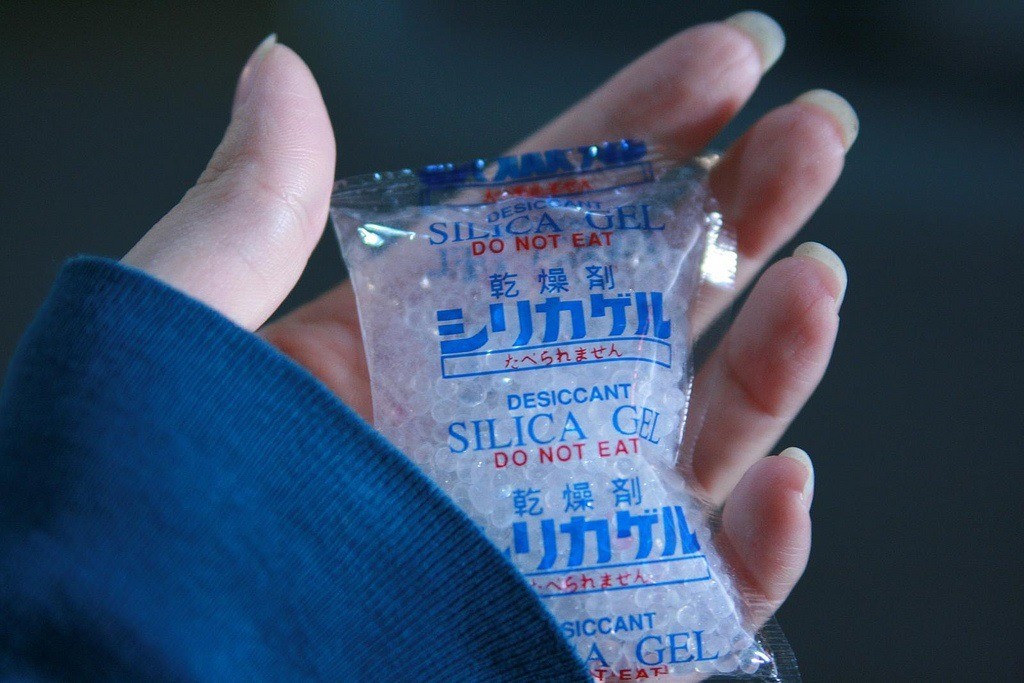

Consider using protective cases that are designed to resist moisture. These cases can provide a physical barrier that prevents condensation from affecting your device.
Corrosion in Electronic Components
Corrosion is a natural process that can cause significant damage to electronic components. It occurs when a metal reacts with its environment and starts to degrade or break down. In electronic devices, this typically happens when moisture comes into contact with metal parts, such as circuits or connectors.
When moisture interacts with these metal components, it can cause them to oxidize, a process commonly known as rust formation. This can lead to the formation of rust or other compounds on the surface of the metal parts. These compounds can disrupt the flow of electricity, causing the device to malfunction or even fail completely.
Corrosion can also lead to physical damage to the components. For example, it can cause metal parts to become brittle and break, or it can cause solder joints to fail. This can lead to loose or broken connections, which can prevent the device from functioning properly.
The impact of corrosion on device performance can be significant. It can cause devices to run slowly, crash, or fail to turn on at all. In severe cases, it can even lead to the complete failure of the device.
Preventing corrosion in electronic components is crucial. This can be achieved through a variety of methods. One common method is to keep the device dry and avoid exposing it to high humidity environments. This can be done by storing the device in a dry place, using a dehumidifier, or using desiccants to absorb excess moisture.
Another method is to use corrosion-resistant materials in the construction of the device. This can include using metals that are less prone to corrosion, or coating the metal parts with a protective layer to prevent them from coming into contact with moisture.
Regular maintenance and inspection of the device can also help to prevent corrosion. This can involve cleaning the device regularly to remove any moisture or dirt that could contribute to corrosion, and inspecting the device for signs of corrosion so that any issues can be addressed before they cause significant damage.
Humidity Control for Electronics
Humidity control is a crucial aspect when it comes to safeguarding electronic devices from moisture damage. Humidity, or the amount of water vapor present in the air, can have a significant impact on the performance and longevity of your devices. Too much humidity can lead to condensation forming on your devices, which can cause short circuits and other types of damage. On the other hand, too little humidity can create static electricity, which can also harm electronic components.
There are several methods to control humidity and protect your electronics:
Dehumidifiers
Dehumidifiers are devices that reduce the level of humidity in the air. They work by drawing in air from the room, removing the moisture, and then blowing the dry air back into the room. Dehumidifiers come in various sizes, from small units suitable for a bedroom or office, to larger units that can cover an entire house. If you live in a particularly humid area or have a room with a lot of electronics, a dehumidifier can be a worthwhile investment.
Air Conditioners
Air conditioners not only cool the air, but they also reduce humidity levels. As the air conditioner cools the air, it also condenses the water vapor, effectively removing moisture from the air. This is why in hot and humid climates, air conditioning is often essential for maintaining a comfortable and safe environment for electronics.
Humidity Control Systems
For those who require a high level of precision, dedicated humidity control systems are available. These systems are often used in data centers and other environments where electronics are critical to operations. They work by continuously monitoring the level of humidity in the air and adjusting it as necessary to maintain a set level. While these systems can be quite expensive, they can provide the best protection for valuable or critical electronic equipment.
Regular Maintenance
In addition to these devices, regular maintenance and care of your electronics can also help prevent damage from humidity. This can include cleaning your devices regularly to remove dust and dirt that can trap moisture, storing electronics in a cool and dry place, and avoiding sudden temperature changes which can cause condensation.
Moisture-Resistant Electronic Devices
In the world of electronics, one of the most significant advancements in recent years has been the development of moisture-resistant devices. These are gadgets that have been specifically designed and built to resist the damaging effects of moisture, whether it’s from a sudden downpour, an accidental spill, or just the high humidity levels in certain environments.
So, how do these devices work? Well, manufacturers use a variety of techniques to make their devices moisture-resistant. Some use special coatings that repel water, while others design the device in such a way that water can’t easily get inside. For instance, they might use rubber seals around the openings, or they might design the device so that any water that does get in can easily drain out again without damaging the internal components.
But the big question is, are these moisture-resistant devices worth the investment? Well, that depends on a few factors. If you’re someone who often finds themselves in situations where your devices could get wet – maybe you love outdoor activities, or you live in a place with a lot of rain – then a moisture-resistant device could definitely be a good investment. It could save you a lot of money in the long run by preventing damage to your device.
On the other hand, if you’re someone who mainly uses their devices indoors and rarely exposes them to moisture, then a moisture-resistant device might not be necessary. It’s always a good idea to consider your own specific needs and circumstances before deciding whether to invest in a moisture-resistant device.
Electronic Device Care in Humid Environments
Living in a humid environment can pose unique challenges when it comes to taking care of electronic devices. Humidity, or the amount of moisture in the air, can have a significant impact on the performance and lifespan of your devices. But don’t worry! With a little knowledge and some proactive steps, you can keep your electronics in top shape, even in high-humidity conditions.
First, it’s important to understand why humidity is a problem for electronics. Electronic devices, such as smartphones, laptops, or gaming consoles, are made up of intricate circuits and delicate components. When exposed to moisture, these components can corrode or short-circuit, leading to device malfunctions or even total failure.
So, how can you protect your devices from the effects of humidity? Here are some tips:
- Store Your Devices Properly: Always store your electronic devices in a cool, dry place. Avoid leaving them in areas with high humidity, such as bathrooms or kitchens. If possible, use airtight containers or bags to store your devices when they’re not in use.
- Use Desiccants: Desiccants are substances that absorb moisture from the air. You’ve probably seen small packets of desiccants included in the packaging of certain products. You can use these packets to help keep your electronic devices dry. Just place a packet in the storage container or bag with your device.
- Consider a Dehumidifier: If you live in a particularly humid environment, you might want to consider investing in a dehumidifier. These devices reduce the level of humidity in the air, making your home more suitable for storing electronics.
- Regular Cleaning: Dust and dirt can trap moisture, increasing the risk of damage to your devices. Regularly clean your devices using products designed for electronics. Be sure to follow the manufacturer’s instructions to avoid causing any damage during the cleaning process.
- Avoid Sudden Temperature Changes: Moving your device from a cool environment to a warm one can cause condensation to form on your device, similar to how a cold glass of water “sweats” on a hot day. Try to keep your devices at a stable temperature to avoid this issue.
Prevention of Moisture Damage in Electronics
Preventing moisture damage in electronics is a crucial aspect of maintaining the longevity and functionality of your devices. It’s a well-known fact that prevention is always better than cure, and this holds particularly true when it comes to electronics. Moisture can cause a myriad of problems, from causing short circuits to corroding internal components, and can even lead to the complete failure of the device. Therefore, understanding how to prevent moisture damage is an essential skill for anyone who uses electronic devices.
The first step in preventing moisture damage is proper storage. Electronic devices should be stored in a cool, dry place away from any sources of water. This includes avoiding places like bathrooms or kitchens where humidity levels can be high. When traveling, it’s important to keep your devices in a waterproof case to protect them from unexpected exposure to water.
Another important aspect of prevention is the use of protective accessories. This can include things like waterproof cases for phones and tablets, keyboard covers for laptops, and even moisture-absorbing packets that can be placed in the storage areas for your devices. These accessories can provide an extra layer of protection against moisture and can be particularly useful for those living in humid climates or for those who frequently use their devices outdoors.
In addition to these measures, it’s also important to be mindful of the conditions in which you use your devices. Avoid using your devices in the rain or near bodies of water. If your device does get wet, turn it off immediately and remove the battery if possible. Allow it to dry completely before turning it back on.
Lastly, regular maintenance can also help prevent moisture damage. This can include things like cleaning your device regularly to remove any dust or debris that could potentially trap moisture, as well as having your device serviced regularly by a professional to ensure that all components are functioning properly.
Frequently Asked Questions
How does moisture affect electronic devices?
Moisture can cause short circuits, corrosion, and damage to internal components, leading to performance degradation or complete failure.
What are the signs of water damage in electronics?
Slower performance, overheating, or a device that fails to power on may indicate moisture damage.
What can cause moisture damage in electronics?
Humidity, condensation, spills, or submersion in water can all lead to moisture damage.
How does humidity impact device performance?
High humidity can cause condensation inside the device, which may result in short circuits and corrosion of metal parts.
Can condensation damage electronics?
Yes, sudden temperature changes leading to condensation can harm sensitive electronic components.
How can I prevent moisture damage to my devices?
Use desiccants, keep devices in cool and dry environments, and avoid sudden temperature shifts.
What are desiccants, and how do they help?
Desiccants are moisture-absorbing materials like silica gel that help keep electronics dry.
Is it possible to waterproof my devices?
Yes, using protective cases, nano-coatings, or waterproof designs can help protect devices from water.
How does corrosion affect electronics?
Corrosion can degrade metal components, disrupt electrical connections, and cause device malfunction.
What can I do if my device gets wet?
Turn it off immediately, remove the battery if possible, and allow it to dry completely before powering it back on.
Conclusion: Safeguarding Your Electronics from Moisture Damage
In our digital age, electronic devices are an integral part of our daily lives. From smartphones and laptops to gaming consoles and home appliances, we rely on these devices for communication, work, entertainment, and so much more. However, these devices are not invincible. One of the most common threats they face is moisture damage.
Understanding the effects of moisture on electronic devices is crucial. Moisture, whether it’s from a spilled drink, a humid environment, or even condensation, can cause a variety of problems. It can lead to short-circuits, corrode metal components, and degrade the overall performance of the device. In some cases, moisture can cause irreparable damage, rendering the device useless.
But there’s good news. By taking proactive steps, we can prevent and protect our devices from moisture damage. This involves a combination of strategies, including protecting our devices from high humidity, waterproofing them, controlling condensation, and even using moisture-resistant devices.
For tech enthusiasts, understanding these strategies can help you maintain the performance and longevity of your devices. For professionals who rely on electronic devices for work, this knowledge can prevent unexpected device failure and the resulting disruption to your work. And for everyone else, these strategies can help protect your personal devices, saving you from the cost and inconvenience of device repair or replacement.
ขอบคุณที่ใช้เวลาอ่านบทความของเราเกี่ยวกับการป้องกันความชื้น ทางเราหวังว่าท่านจะได้รับข้อมูลที่มีคุณค่าและเป็นประโยชน์ ทางเรายินดีให้บริการการปรึกษาฟรีเพื่อพูดคุยเกี่ยวกับความต้องการของท่านและให้คำแนะนำเกี่ยวกับวิธีการป้องกันความชื้นที่กำหนดเฉพาะสำหรับคุณ โปรดติดต่อเราที่ 0858124188 เพื่อนัดหมายการปรึกษาหรือเยี่ยมชมร้านค้าของเราเพื่อค้นหาผลิตภัณฑ์ที่ช่วยป้องกันสินค้าของคุณจากความเสียหายจากความชื้น ทางเราหวังว่าจะได้รับข่าวสารจากท่านเร็วๆนี้
